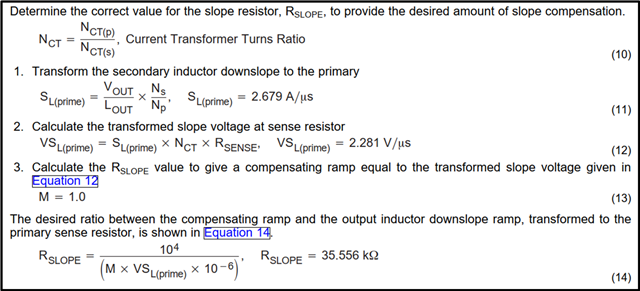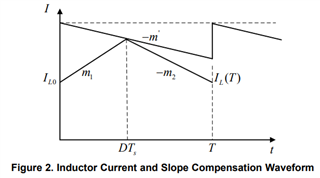Other Parts Discussed in Thread: UCC28220
Tool/software:
Hello,
Can you please suggest the method how to calculate slope resistor for UCC28220 interleaved boost converter. The method given in datasheet is also wrong. Values calculated by the formulas mentioned in the application note are wrong.



